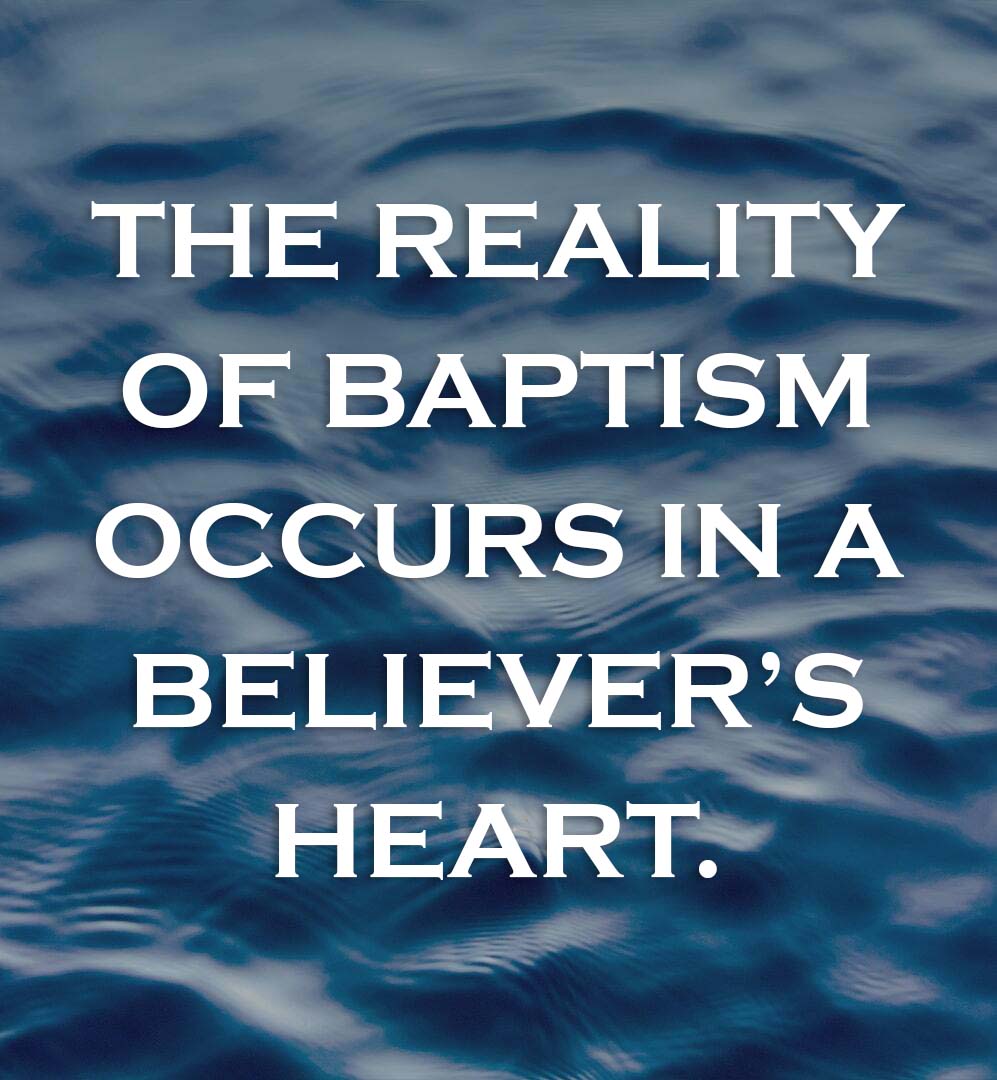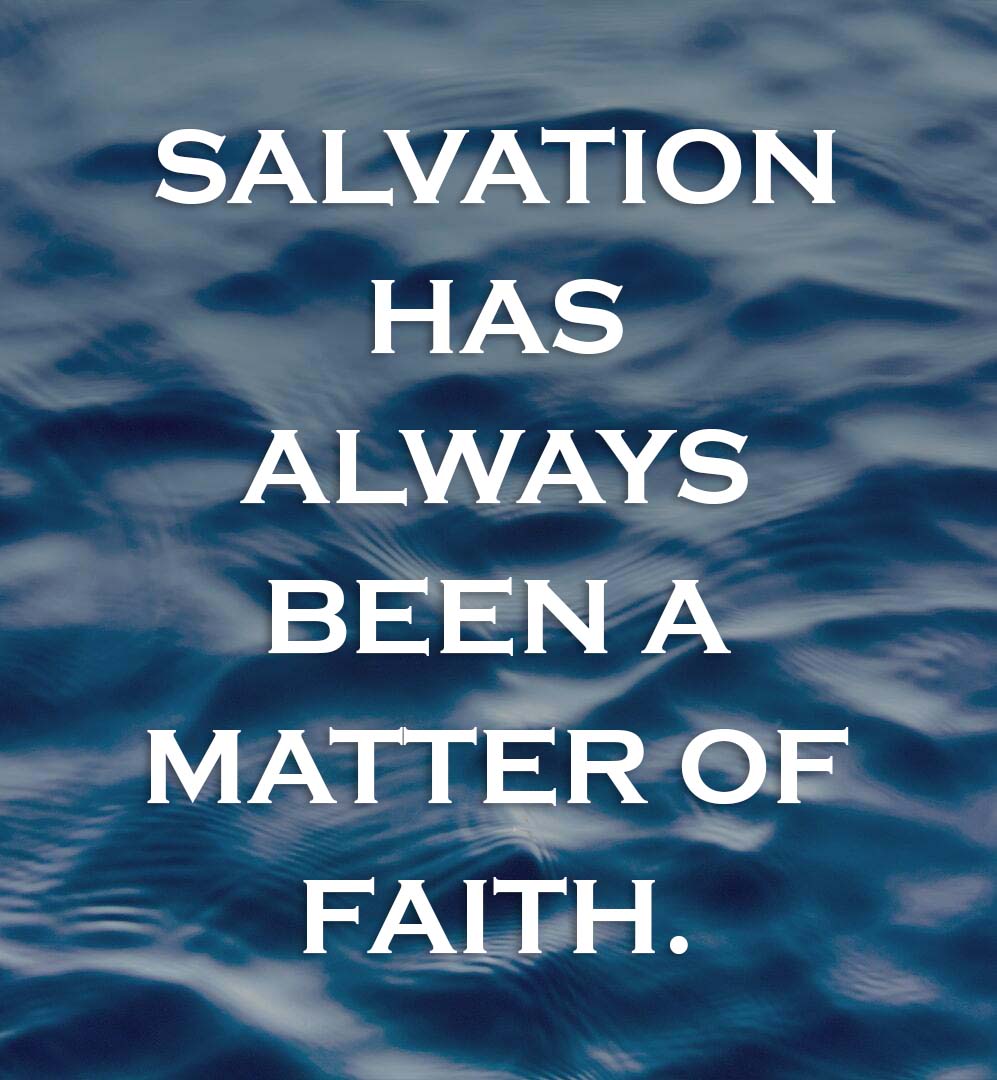As of February 1, 2022, Father Andres Arango resigned from his role as the pastor of St. Gregory Parish in Phoenix, Arizona, because the Diocese of Phoenix determined that the thousands of baptisms he had performed during his twenty-year career were “invalid.”1 Why? When Father Andres administered the sacrament, he would say, “We baptize you in the Name of the Father and of the Son and of the Holy Spirit” instead of “I baptize you.” According to the Catholic Church, this difference not only nullifies a person’s baptism, but it also affects childhood confirmations and the ability to participate in communion. It may even impact Catholic marriages and ordinations.2
For many, this situation has raised concerns about baptism and its role in salvation. As we consider the question of validity, let’s look at baptism’s purpose, its practice in biblical times, and what it means for us today.
Baptism is a response to the Gospel.
Baptism is immersion.
Baptism is available to anyone who believes.
Baptism is a priority.
Baptism is about faith.
How Can I Be Sure of My Salvation?
How Were People Baptized in the New Testament?
What Did Baptism Look Like in the Old Testament?
What Does Baptism Mean for Us Today?
Receive Daily Devotions from David Jeremiah
Sign up to receive email devotions each day!
What Is Baptism?
When a believer is immersed in water, it is a picture of joining Christ in His death. And when that person rises from the water, it is as though they are rising from the grave with Him—victorious over sin and death (Romans 6:3-4). From the moment a person accepts Jesus as the Lord and Savior of their life, their faith makes them righteous in God’s eyes. We can think of baptism as a public demonstration of what has happened in a believer’s heart.
How Were People Baptized in the New Testament?
In Acts 8:26-40, we find the story of Philip leading an Ethiopian man to Christ and baptizing him. When Philip met the man, he was struggling to understand the prophecy of Jesus’ trial before Pilate, His silence before His accusers, His shameful treatment by the rulers, and His slaughter as a lamb on the cross for us all (Isaiah 53). Philip answered the man’s questions and interpreted the prophecy for him. After hearing Philip’s testimony, the Ethiopian man asked to be baptized (Acts 8:36).
Before agreeing to perform the baptism, Philip issued a single requirement: “If you believe with all your heart, you may.” The man responded, “I believe that Jesus Christ is the Son of God” (Acts 8:37). Based upon this profession of faith, Philip baptized the man in a nearby pool of water. The Holy Spirit carried Philip away to preach elsewhere, and the Ethiopian man “went on his way rejoicing” (Acts 8:39).
This passage reveals several facts about baptism.
Baptism is a response to the Gospel.
Before Philip agreed to baptize the Ethiopian man, he asked questions to determine whether he was a believer. I know that some churches baptize infants, but that is not the pattern provided by the New Testament. Baptism symbolizes the change that occurred in a new believer’s life. If a person is baptized before they are saved, the baptism isn’t meaningful except to other people. The reality occurs in a believer’s heart.

Baptism is immersion.
The Greek word for baptism, baptizo, means “to dip.” It does not mean “to sprinkle” or “to pour.” In the case of Philip and the Ethiopian dignitary, they met along a dusty desert road between Jerusalem and Gaza. As a high-ranking official, the Ethiopian gentleman would have been clothed in fine robes and surrounded by attendants. It would have been far simpler for him to be sprinkled with water than to get out of his chariot, disrobe, and submit to total immersion. But Acts 8:38 tells us, “Both Philip and the eunuch went down into the water.” And verse 39 says, “They came up out of the water.” Immersion is the only form of baptism we find in the New Testament.
Baptism is available to anyone who believes.
Every human being has equal access to the rite of baptism. In his letter to the Galatian church, the apostle Paul argued passionately against adding any man-made barriers to the purity and simplicity of the Gospel. He wrote, “There is neither Jew nor Greek, there is neither slave nor free, there is neither male nor female; for you are all one in Christ Jesus. And if you are Christ’s, then you are Abraham’s seed, and heirs according to the promise” (Galatians 3:28-29). Racial barriers have no place between Christians because we are all members of God’s family. It’s not a matter of skin color, background, country of origin, dialect, or accent. The Gospel is for everyone.
Baptism is a priority.
When Jesus was preparing to leave His disciples for the last time, He instructed them, “Go therefore and make disciples of all the nations, baptizing them in the name of the Father and of the Son and of the Holy Spirit, teaching them to observe all things that I have commanded you” (Matthew 28:19-20). Throughout the New Testament, baptism immediately follows belief in Jesus Christ as the Son of God. It concerns me when I see people putting off doing the first thing God tells them to do. That’s not living in obedience. Baptism is powerless to save us from our sins, but it is our first order of business once we place our faith in Jesus Christ.
Baptism is about faith.
Acts 8 provides many details about the Ethiopian’s conversion and baptism, but did you notice anything missing? Scripture does not tell us what was said during the baptism. The only thing that mattered was the man’s profession of faith and his purpose in being baptized. In fact, God’s Word mentions many baptisms, but it never gives us those details. Scripture only stipulates that baptism is done “in the name of the Father and of the Son and of the Holy Spirit” (Matthew 28:19).
What Did Baptism Look Like in the Old Testament?
People often assume that Old Testament saints were saved by observing the Law and that the age of salvation by grace through faith did not begin until Jesus came as the Messiah. But Genesis 15:6 tells a different story: “[Abraham] believed in the Lord, and [the Lord] accounted it to him for righteousness.” At the moment when he first believed, Abraham became the first recipient of justification by faith and the father of all who would walk with God by faith. His faith did not save him, but it was the channel by which God credited righteousness to him.
More than ten years later, God made a covenant with Abraham. He said, “This is My covenant which you shall keep, between Me and you and your descendants after you: Every male child among you shall be circumcised; and you shall be circumcised in the flesh of your foreskins, and it shall be a sign of the covenant between Me and you” (Genesis 17:10-11). In much the same way that baptism identifies God’s people today, circumcision served as a sign and a seal of the covenant between God and His ancient people.
What Does Baptism Mean for Us Today?
The method of responding to divine grace has differed through the ages, but salvation has always been a matter of faith. Nothing else is required. As Jesus hung on the cross, He pardoned a repentant criminal with these words: “Assuredly, I say to you, today you will be with Me in Paradise” (Luke 23:43). The criminal had no time to join a church, be baptized, or do good works. He only had the opportunity to believe in Jesus—and he was saved.

If you have made a sincere profession of faith in Jesus Christ as your Lord and Savior and you have not yet been baptized, I encourage you to follow the Lord in baptism. If you have already been baptized, praise God for your obedience to God’s Word.
I was baptized as a child before I understood what it meant to be a Christian. It wasn’t until I struggled through some difficult times as a teenager that I accepted Jesus Christ as my Lord and Savior. At that time, I was baptized again. If I had not participated in believer’s baptism, my salvation would have been secure, but I would have missed the opportunity to demonstrate obedience to God.
Perhaps the toughest concept to grasp about the Gospel of Jesus Christ is its simplicity. We live in a world where everything comes at a price. If somebody tells us something is free, we generally assume it has strings attached. That principle holds true for everything except God. There is nothing we can give Him or do for Him to secure our salvation. We can only admit that we are ungodly people, undeserving of His favor. And when we believe that God sent His Son to die on the cross for our sins, He takes away our guilt and replaces it with Christ’s righteousness. That is something no one can take away or “snatch…out of [God’s] hand” (John 10:28). Our natural response to God’s grace is gratitude and a desire to tell others. That is the essence of baptism—it is an act of obedience—it is a great testimony, and it is a matter of great joy.
Sources:
1Thomas J. Olmstead, “A Message from Bishop Olmsted,” Diocese of Phoenix, January 14, 2022, https://dphx.org/valid-baptisms/message-from-bishop-olmsted/, accessed on March 29, 2022.
2Diocese of Phoenix https://dphx.org/, “Notice About the Validity of Baptisms,” https://dphx.org/valid-baptisms/, accessed on March 29, 2022.
